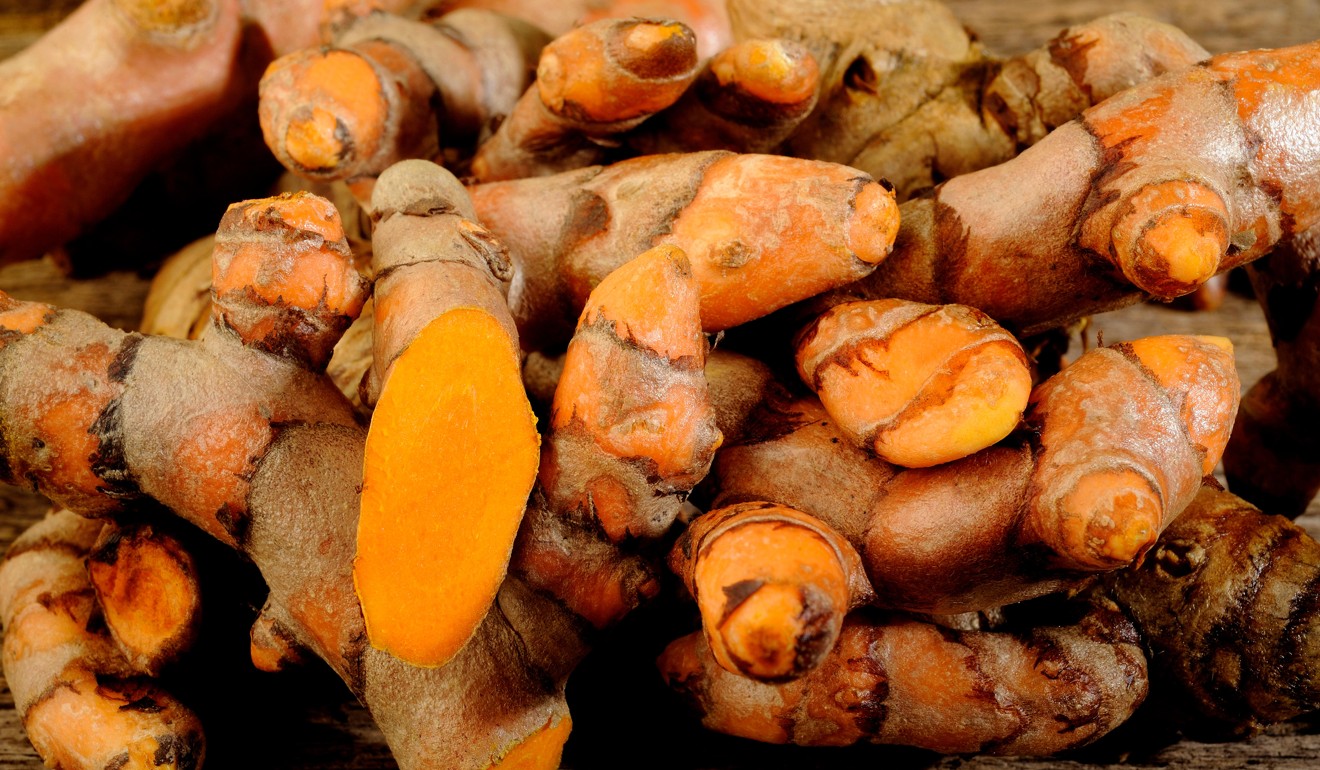
Six top healthy food trends for 2018, from the next superfoods to a planet-friendly animal protein source
A root, a leaf, an insect, a molecule, a diet strategy – our experts predict the things healthy eaters will be excited about next year
Coconuts – everywhere and in everything – were on the health-food radar for 2017, along with seaweed and near-sobriety. Forecasters were largely correct in highlighting these trends, which are likely to continue. Keen to know what the next big things in health food might be, we polled experts to learn what we can expect to see in our pots and on our plates in 2018.
1. Turmeric
The sunshine-yellow spice used in much of Indian cuisine is expected to continue its climb in popularity, according to registered dietitian Denise Fair of Central Health Medical Practice in Hong Kong. It has a growing fan base for its superfood qualities, she says, noting many studies have suggested it has “many beneficial effects, which range from helping to fight cancer and Alzheimer’s to reducing the signs of ageing”.
How Indians are embracing the superfoods all around them
She explains why: “The main active component in turmeric is curcumin, a strong antioxidant which helps slow the signs of ageing and the cellular damage seen in most cancers. It is a powerful anti-inflammatory, reducing chronic inflammation, a common catalyst for cardiovascular disease, hypertension and various degenerative diseases.”

It is becoming popular in delicious golden lattes and appearing in many guises, including as a healthful colouring agent on unicorn toast. To see benefits, you need to take about one to four grams, which is more than you’d get in an average helping of curry, so you may also seek out good-quality turmeric/curcumin supplements. Those containing black pepper help aid the absorption of this spice.
2. Moringa
Another natural ingredient set to grab the limelight in 2018 is moringa. The powder is made from the leaves of the moringa tree, nicknamed the “miracle tree” for its multiple beneficial attributes.
It has been used in traditional Indian medicine for centuries. A growing body of research supports its nutritional and medicinal applications. It contains more than 90 nutrients, including 19 amino acids, plus minerals and vitamins – including B12.
A review of research to date in the Asian Pacific Journal of Tropical Medicine published in July suggests “the high nutritional content found in dried leaves is an indicator of the usefulness of the plant as a food resource”.

The powder can be added to soups, smoothies, drinks or taken in supplement form. A sign that it is on the rise? US food giant Kellogg Company’s venture capital fund eighteen94 capital led a US$4.25 million infusion into a California-based moringa start-up company, Kuli Kuli, early in 2017.
The fund’s managing director, Simon Burton, said at the time: “We’re backing a new superfood category, one in which we see the potential for ongoing high-growth.”
This superfood is showing up in energy shots and bars, teas, flavoured waters and teas.
How fermentation is making Hong Kong restaurant dishes more flavourful and healthy
3. Fermented foods
Sauerkraut, miso, kimchi, lassi, tempeh, sourdough bread and other fermented foods are going to be more sought after, says Fair, primarily because they help align our gut flora. The process of fermentation involves bacteria, yeast and fungi converting starch into alcohol or acids – which typically give fermented foods their characteristic sourness.
Fair says: “It is the transformation of these starches that enhances the natural beneficial bacteria in food and these bacteria – probiotics – address a multitude of health issues, especially digestive health.”

Good bacteria aid the digestion, absorption and assimilation of nutrients. “They also play a role in immune function,” says Fair, “because the gut accommodates a large part of our immune system, and in consuming probiotic-rich foods, we’re looking after the mucosa (gut lining) which works as a barrier, making the immune system more robust; when the level of good bacteria in the intestine falls, the risk of illness rises.”
4. Crickets
It seems the West is catching up with the East – because, as registered Hong Kong dietitian Danica Yau observes, “insect eating is nothing new in Asia”. What has brought them to global attention, she says, “is the minimal ecological impact, availability and nutritional value of edible insects”.
Fiona Tuck, an Australian health and wellness expert and author of The Forensic Nutritionist, is considered a myth buster in the industry. “Eating insects is good for the economy and the environment: crickets require less land, food, water, and energy than many animal protein sources including beef, chicken or pork.”
Hong Kong quest for the Tesla of food, so world can still feed itself in 2050 by changing diets and farming more sustainably
And they’re not just good for the planet, they’re good for us, too. Crickets are 69 per cent protein; contain all nine essential amino acids; are high in vitamin B12; a good source of both Omega 6 essential fatty acids and Omega 3 in the “perfect” 3:1 ratio; have twice as much potassium as spinach, as much calcium as milk, and are a source of heme (more on this below), the more absorbable form of iron commonly found in red meat.
Even the United Nations Food and Agricultural Organisation agrees that “edible insects are undeniably rich sources of iron”. What’s more, you don’t need to pull insect legs off as you toss its body into your casserole as crickets for cuisine come in a helpfully, palatable powder form.

5. Heme
A seriously cutting-edge food ingredient that can take the meatless sting out of opting for a vegetable-based diet, heme – pronounced “‘heem” (from the Greek for ‘blood’) – is an iron-containing molecule present in all plants and animals.
In animals it allows our blood to carry oxygen. It’s found in muscle and is supported by a protein, myoglobin (haemoglobin measures our iron content, a low count suggests anaemia). And it is the magic ingredient manipulated by California-based Impossible Foods in their Impossible Burgers.
As Fair explains, they have engineered plant-based proteins to create ‘bleeding hamburgers’ from vegetables. The company spent five years learning how to do this. Its marketing states that heme “is what makes meat taste like meat”, and adds: “You’ve never tasted plants like this.”
Intermittent fasting is a proven way of losing weight quickly – but it may not work for everyone
6. Intermittent fasting
In looking at health food trends, we look beyond what we eat to how we eat. Intermittent fasting – despite being a centuries-old practice in many cultures – is gaining popular ground. Research suggests it can improve athletes’ performance, support the digestive system as it protects the gut lining, improve blood sugar management and promote fat loss. It may also have anti-ageing benefits.
While people once opted to fast for a couple of days in a week, they now opt for “daily fasting”, Fair says. “This generally means that you do not eat for 14-16 hours of your day. For most people, that involves not eating breakfast and making sure to eat dinner early.”
But, she warns, “like all diets and diet fads, while it has been shown to be effective for some people, it tends to be hard to maintain”. Consult your doctor before adopting any fasting regime, she adds.

